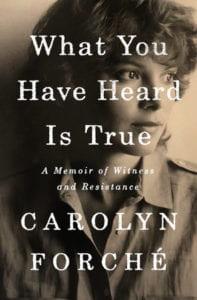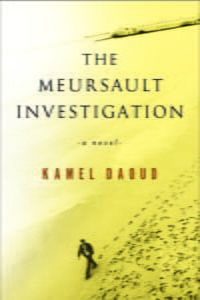Author: ag5681
A Poet Reflects on Friendship and Hope in “What You Have Heard is True”
 By Nicolette Natale
By Nicolette Natale
It begins with a stranger in a white Toyota Hiace with an El Salvador license plate, the car that pulls up outside poet Carolyn Forché’s house in California. It is the 1970s, and she is needed, the stranger tells her. El Salvador is about to go to war, and she needs to bear witness, to make people in North America understand.
The stranger is Leonel Gomez Vides, and he is central to Carolyn Forché’s riveting memoir, “What You Have Heard Is True,” a finalist for the 2019 National Book Award for non-fiction. As readers we understand that Gomez Vides deliberately presents himself as a mystery; he is a man who has posters of both Che Guevara and Mussolini in one of his homes so as not to reveal his political leanings, at least on the surface level.
Re-encountering “The Stranger”: A Review of “The Meursault Investigation”
 By Cora Lee Womble-Miesner
By Cora Lee Womble-Miesner
Some authors can put their ear to a novel and hear what is being smothered underneath: the flip side of a coin, the antagonist’s backstory. In reimagining a book from a different perspective, an author can shape a new interpretation of a classic text. What “Wide Sargasso Sea” is to “Jane Eyre,” Kamel Daoud’s “The Meursault Investigation” is to Albert Camus’s “The Stranger.” Daoud lends a penetrating new angle to the philosophical novel by writing from the perspective of Harun, the brother of the Arab man that Meursault kills, voicing the aftermath of this death on their family and community and the torment caused by the victim’s unnaming in the media coverage and “memoir” that followed. In this impassioned retelling, “The Stranger” is not a novel, but Meursault’s own non-fiction recounting of his crimes which propelled him into fame, making him a household name, while Harun’s murdered brother, Musa, is ignored and forgotten by the public eye. The narrator denounces Meursault, saying, “If he hadn’t killed and written, nobody would have remembered him.”

